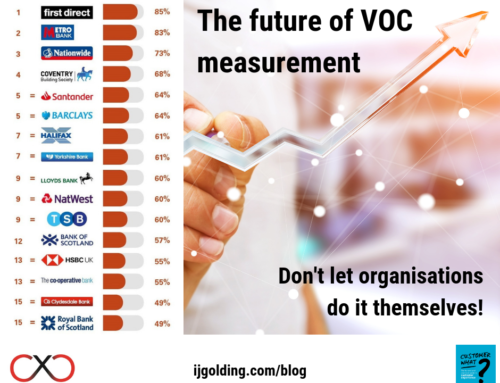
This weekend I received an email from Starbucks. The title of the email was ‘My Starbucks Idea’. I was made aware of this initiative a couple of years ago – a genuine proactive initiative to involve customers in a discussion to essentially make Starbucks better. A tool to ensure that customer feedback is used positively and transparently so that customers could see the tangible effects of their feedback.
The feedback that this tool encourages is categorised into Product ideas, Experience ideas, and Involvement ideas. At the time of writing this blog, Starbucks have received almost 400,000 ideas from customers, many of which have become reality, and even if they do not, Starbucks take the time to explain why.
If you have not seen ‘My Starbucks Ideas’ you must take a few minutes to have a look – it is very impressive and a huge commitment from Starbucks to engage in a continuous conversation with their customer base – http://mystarbucksidea.force.com/apex/ideahome
‘My Starbucks Idea’ got me thinking – why do Starbucks customers bother sending in their ideas? Why does any customer bother giving feedback?
To answer these questions, let us consider customer feedback tools in general. The majority of organisations around the world use surveys to elicit feedback from their customers. Whether they be online surveys through ‘web pop up tools’, email surveys, telephone surveys, surveys at the beginning and end of telephone calls through IVR systems, or even postal questionnaires, businesses around the world have gone survey crazy, wanting to know what customers think.
Additionally, companies conduct focus groups, interactive research sessions with customers, and even qualitative research where you watch customers behind one way mirrors! BUT the key question with all of these methods is ‘why do customers bother’?
In most cases, customers are giving us their feedback ‘out of the kindness of their hearts’. On many occasions, customers are so irritated or annoyed, it is their negative emotion that leads them to ‘download’ their feelings. In other cases, advocates or supporters of your brand are usually willing to say lovely things about you at every opportunity. But 99% of the time, the customer will receive NOTHING for the feedback they are giving.
Many consumers believe that by telling an organisation what they thought of an experience, the organisation will use that feedback to make the experience better – to act on the things that the customer does not think is very good – to improve what needs to be improved. BUT – is this really the case?
If you think long and hard about your own experiences of giving feedback – how many times can you say that a company has ever done anything with it – that you are aware of? Has a company you have ever given feedback to changed an element of the customer experience to the extent that you noticed? Has a company you have ever given feedback to told you what they did with the feedback?
Unfortunately, in the desperate rush to find out what customers think, I fear that we have perhaps forgotten to consider what the experience might be like of giving that feedback in the first place. The well over used phrase of ‘feedback is a gift’, leads me to think that it is the only gift we never say ‘thank you’ for.
What Starbucks have created with ‘My Starbucks Idea’ is a very different way of getting feedback. A collaborative way of getting feedback. A way of ensuring that customers know what is being done with the things they provide as a ‘gift’. It is clever. That is why Starbucks customers bother. That is why Starbucks customers care.
Why do customers bother to complete surveys for other companies? Your guess is as good as mine – maybe they are either deliriously happy, or at the depths of despair. But maybe it explains why the MAJORITY of customers who are asked do not bother. This ‘silent majority’ is the group of customers who will provide the tangible answers to what your organisation needs to do to improve, or stay ahead.
So the next time you look at your company CSat scores, or the monthly NPS results, just have a think about the difference the feedback that comprises the scores will actually make on the people who provided it. Ask yourself the question – why do our customers bother?
Starbucks are not the only company who proactively tell customers what they do with feedback – can you provide further examples by commenting on this blog?
You can see me talking about the importance of customer experience measurement at the Customer Experience Strategy Summit in London (May 2012) via this link – http://business-reporter.co.uk/2012/07/feel-the-pulse-of-your-people/






Thanks Ian, good question but unfortunately in most cases gathering customer feedback is a numbers activity i.e. the board needs some CSAT or NPS and or benchmarking. Unless you take VoC seriously and really design it to be part of the business going forward – fully integrated with every decision a business makes – very little will come out of it.
Up until now business’s focused on buying a VoC platforms (not mantras) to capture data expecting it to drive action…but are now realising that having the data is not enough – who have guessed!? To really make a difference you need leadership commitment and be able to translate what you want to be as a business for your front line employees and customers. Unless you can drive change from customer data activities don’t bother capturing it.
Bottom line – Stop doing what’s easy and do what’s right.
[…] on ijgolding.wordpress.com Geen categorie ← Klantbeleving: nightmare or […]
Thanks for sharing your thoughts on My Starbucks Idea. We love engaging with our customers. The My Starbucks Idea community is a great way to see which ideas matter most in an open conversation with other Starbucks fans.